Filter by
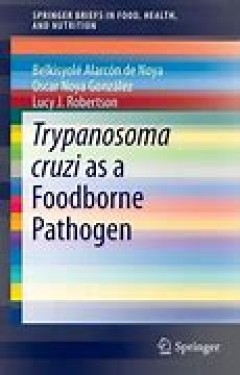
Trypanosoma cruzi as a Foodborne Pathogen
This Brief provides a comprehensive overview of Trypanosoma cruzi, a parasite that is traditionally considered as exclusively vectorborne, but can be foodborne, and may lead to outbreaks of Chagas disease in consumers. The characteristics of Trypanosoma cruzi and the clinical effects of the disease are covered, including documented outbreaks, regional patterns, and epidemiology. The various tra…
- Edition
- -
- ISBN/ISSN
- 978-3-319-23410-6
- Collation
- 5 illustrations in colour
- Series Title
- -
- Call Number
- -

Extremophiles: Applications in Nanotechnology
This book discusses the extremophiles explored for biosynthesis of nanoparticles. Nanotechnology is a widely emerging field involving interdisciplinary subjects such as biology, physics, chemistry and medicine. A wide variety of microorganisms, such as bacteria, fungi and algae are employed as biological agents for the synthesis of nanoparticles. Novel routes by which extremophiles can be emplo…
- Edition
- -
- ISBN/ISSN
- 978-3-319-45215-9
- Collation
- 14 b/w illustrations, 34 illustrations in colour
- Series Title
- -
- Call Number
- -
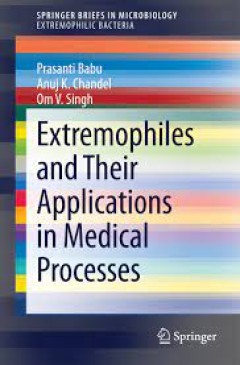
Extremophiles and Their Applications in Medical Processes
Extremophiles are known to thrive under harsh environmental conditions. Many extremophilic bio-products are already used as life-saving drugs. Recent technological advancements of systems biology have opened the door to explore these organisms anew as sources of products that might prove useful in clinical, environmental and drug development.
- Edition
- -
- ISBN/ISSN
- 978-3-319-12808-5
- Collation
- 8 illustrations in colour
- Series Title
- -
- Call Number
- -

Listeria monocytogenes in the Food Processing Environment
This Brief focuses on Listeria monocytogenes, from isolation methods and characterization (including whole genome sequencing), to manipulation and control. Listeriosis, a foodborne disease caused by Listeria monocytogenes is a major concern for public health authorities. In addition, addressing issues relating to L. monocytogenes is a major economic burden on industry. Awareness of its ubiquito…
- Edition
- -
- ISBN/ISSN
- 978-3-319-16286-7
- Collation
- -
- Series Title
- -
- Call Number
- -
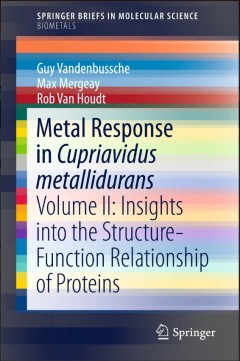
Metal Response in Cupriavidus metallidurans:Volume II: Insights into the Stru…
This book is the second volume of a two-volume set summarizing 40 years of key research findings directly related to metal-resistant Cupriavidus/Ralstonia (Betaproteobacteria). In this second volume, the structural and catalytic data from bacterial primary and secondary transporters (P-ATPases, tripartite chemiosmotic cation/proton efflux systems, cation diffusion facilitators, Major Facilitato…
- Edition
- 1
- ISBN/ISSN
- 978-3-319-20623-3
- Collation
- VII, 70
- Series Title
- SpringerBriefs in Molecular Science
- Call Number
- -

Metal Response in Cupriavidus metallidurans:Volume I: From Habitats to Genes …
This book is the first volume of a two-volume set summarizing 40 years of key research findings directly related to metal-resistant Cupriavidus/Ralstonia (Betaproteobacteria). In this first volume, the historical and geographical context of these bacteria, which are mostly found in industrial and polluted environments linked to zinc and other non-ferrous metallurgy, is sketched to illustrate th…
- Edition
- 1
- ISBN/ISSN
- 978-3-319-20593-9
- Collation
- IX, 89
- Series Title
- SpringerBriefs in Molecular Science
- Call Number
- -
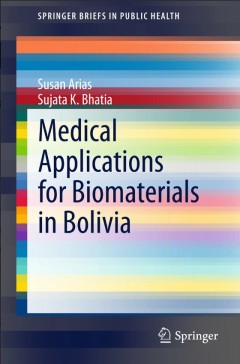
Medical Applications for Biomaterials in Bolivia
This book investigates the potential medical benefits natural biomaterials can offer in developing countries by analyzing the case of Bolivia. The book explores the medical and health related applications of Bolivian commodities: quinoa, barley, sugarcane, corn, sorghum and sunflower seeds. This book helps readers better understand some of the key health concerns facing countries like Bolivia a…
- Edition
- 1
- ISBN/ISSN
- 978-3-319-16774-9
- Collation
- X, 62
- Series Title
- SpringerBriefs in Public Health
- Call Number
- -
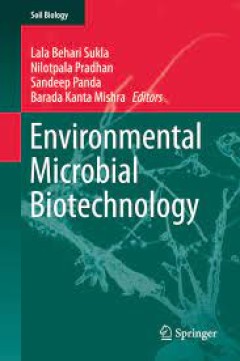
Environmental Microbial Biotechnology
This book provides a timely review of strategies for coping with polluted ecosystems by employing bacteria, fungi and algae. It presents the vast variety of microbial technologies currently applied in the bioremediation of a variety of anthropogenic toxic chemicals, mining and industrial wastes and other pollutants. Topics covered include: microbe-mineral interactions, biosensors in environm…
- Edition
- -
- ISBN/ISSN
- 978-3-319-19018-1
- Collation
- 36 b/w illustrations, 5 illustrations in colour
- Series Title
- -
- Call Number
- -
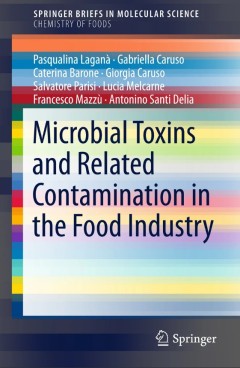
Microbial Toxins and Related Contamination in the Food Industry
This Brief concerns the chemical risk in food products from the viewpoint of microbiology. The “Hazard Analysis and Critical Control Point” (HACCP) approach, which is applied for this purpose, is dedicated to the study and the analysis of all possible dangers by food consumptions and the related countermeasures with the aim of protecting the health of consumers. This difficult objective is …
- Edition
- -
- ISBN/ISSN
- 978-3-319-20558-8
- Collation
- VI, 101
- Series Title
- SpringerBriefs in Molecular Science
- Call Number
- -
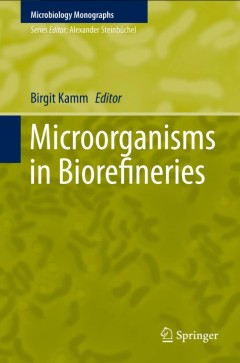
Microorganisms in Biorefineries
The book describes how plant biomass can be used as renewable feedstock for producing and further processing various products. Particular attention is given to microbial processes both for the digestion of biomass and the synthesis of platform chemicals, biofuels and secondary products. Topics covered include: new metabolic pathways of microbes living on green plants and in silage; using ligno…
- Edition
- 1
- ISBN/ISSN
- 978-3-662-45208-0
- Collation
- X, 369
- Series Title
- Microbiology Monographs
- Call Number
- -
 Computer Science, Information & General Works
Computer Science, Information & General Works  Philosophy & Psychology
Philosophy & Psychology  Religion
Religion  Social Sciences
Social Sciences  Language
Language  Pure Science
Pure Science  Applied Sciences
Applied Sciences  Art & Recreation
Art & Recreation  Literature
Literature  History & Geography
History & Geography